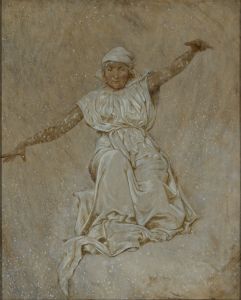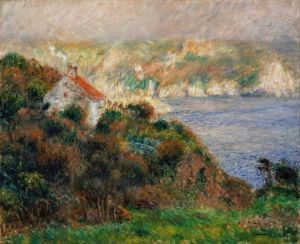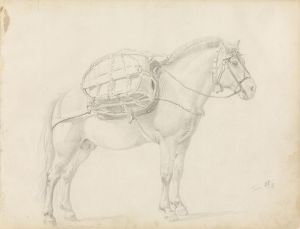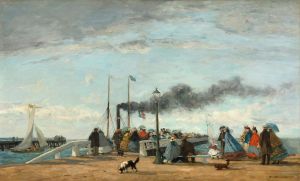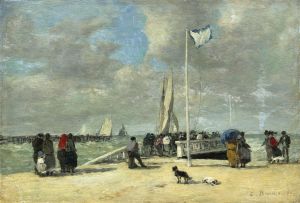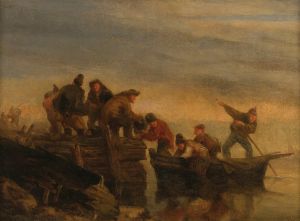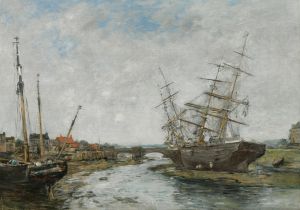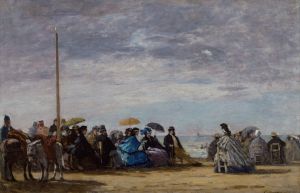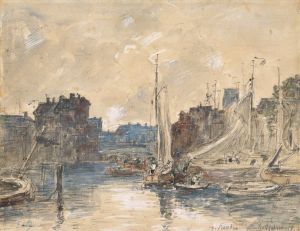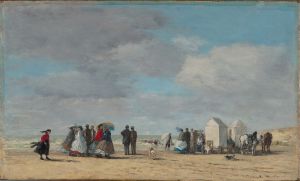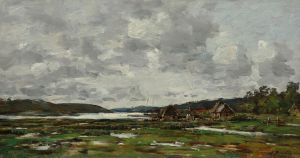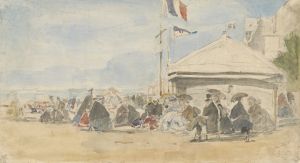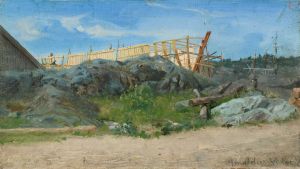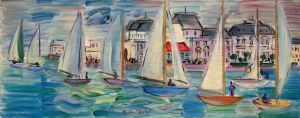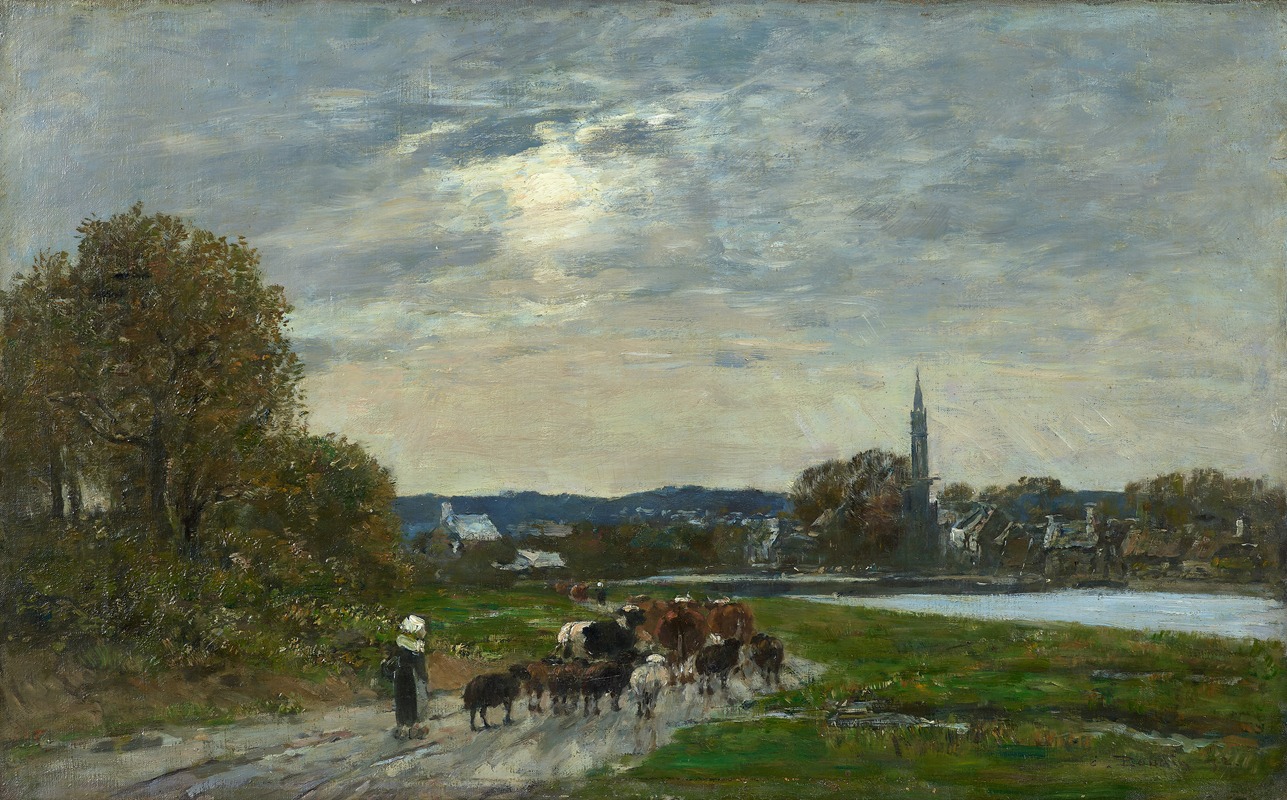
Hôpital-Camfrout. Village et estuaire
A hand-painted replica of Eugène Boudin’s masterpiece Hôpital-Camfrout. Village et estuaire, meticulously crafted by professional artists to capture the true essence of the original. Each piece is created with museum-quality canvas and rare mineral pigments, carefully painted by experienced artists with delicate brushstrokes and rich, layered colors to perfectly recreate the texture of the original artwork. Unlike machine-printed reproductions, this hand-painted version brings the painting to life, infused with the artist’s emotions and skill in every stroke. Whether for personal collection or home decoration, it instantly elevates the artistic atmosphere of any space.
Hôpital-Camfrout. Village et estuaire is a painting by the French artist Eugène Boudin, a prominent figure in 19th-century art and a precursor to the Impressionist movement. Boudin is celebrated for his depictions of landscapes, coastal scenes, and skies, often capturing the interplay of light and atmosphere with remarkable sensitivity. This particular work reflects his enduring interest in the natural beauty of Brittany, a region in northwestern France.
The painting portrays the village of Hôpital-Camfrout, located in the Finistère department of Brittany, along with its estuary. The composition highlights the tranquil charm of the rural setting, with a focus on the harmonious relationship between the land, water, and sky. Boudin's characteristic use of soft, naturalistic colors and loose brushwork is evident, creating a sense of immediacy and capturing the fleeting effects of light and weather.
Eugène Boudin frequently traveled to Brittany, where he found inspiration in the region's rugged coastline, picturesque villages, and maritime culture. His works from this area often depict scenes of everyday life, such as fishing boats, harbors, and local architecture, rendered with an emphasis on atmosphere and mood. Hôpital-Camfrout. Village et estuaire fits within this broader context of his oeuvre, showcasing his ability to convey the serene beauty of the Breton landscape.
The exact date of the painting is not specified, but it is consistent with Boudin's mature style, which developed during the latter half of the 19th century. During this period, he gained recognition for his plein air (outdoor) painting technique, which allowed him to observe and record the changing effects of light and weather directly from nature. This approach influenced many of his contemporaries, including Claude Monet, who regarded Boudin as a mentor.
Hôpital-Camfrout. Village et estuaire exemplifies Boudin's dedication to capturing the essence of a place through his art. While the painting itself may not be as widely known as some of his other works, it remains a testament to his skill as a landscape painter and his deep connection to the natural world. Today, Boudin's paintings are held in high esteem and can be found in major art museums and collections worldwide, reflecting his significant contribution to the development of modern art.





